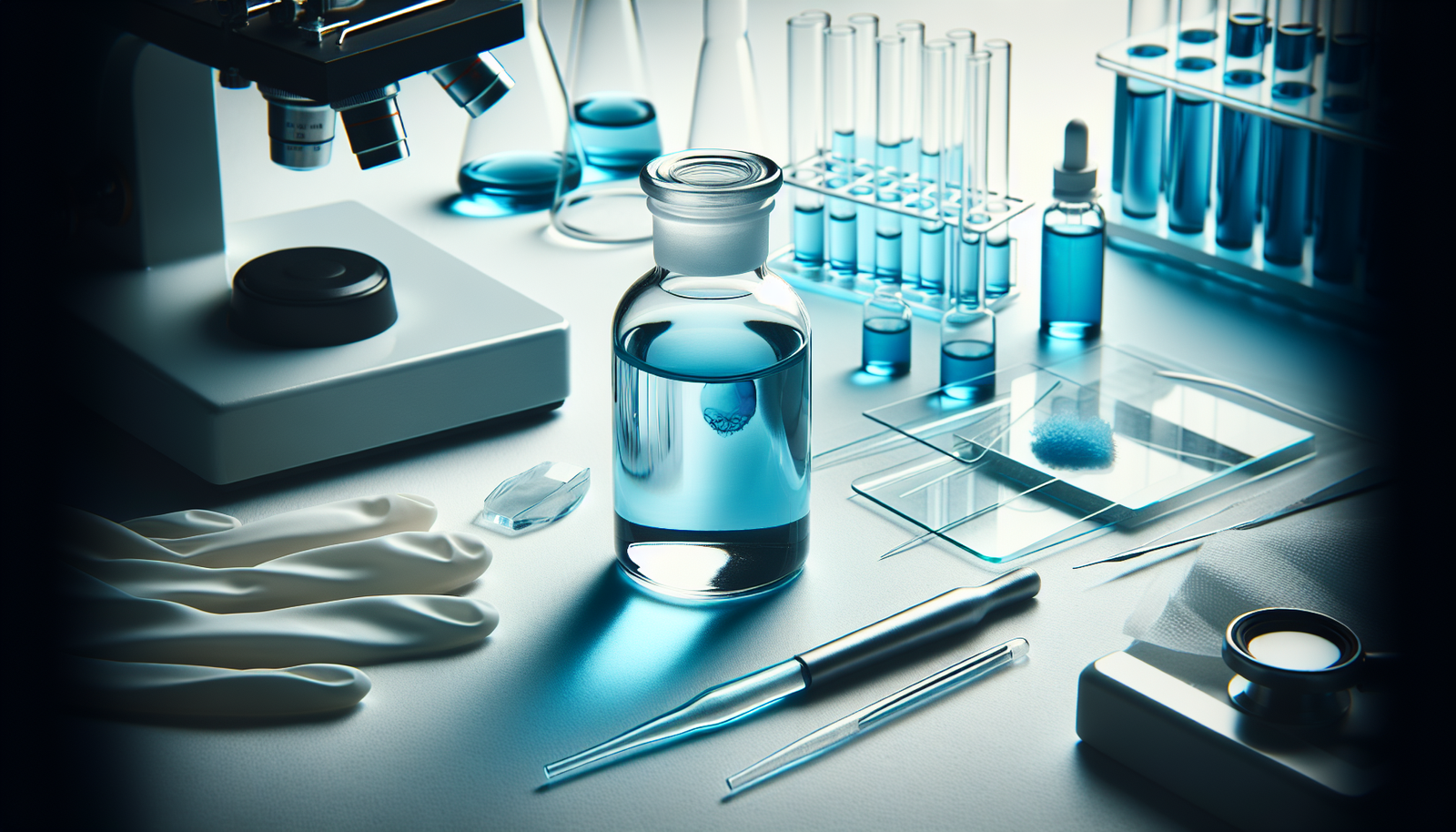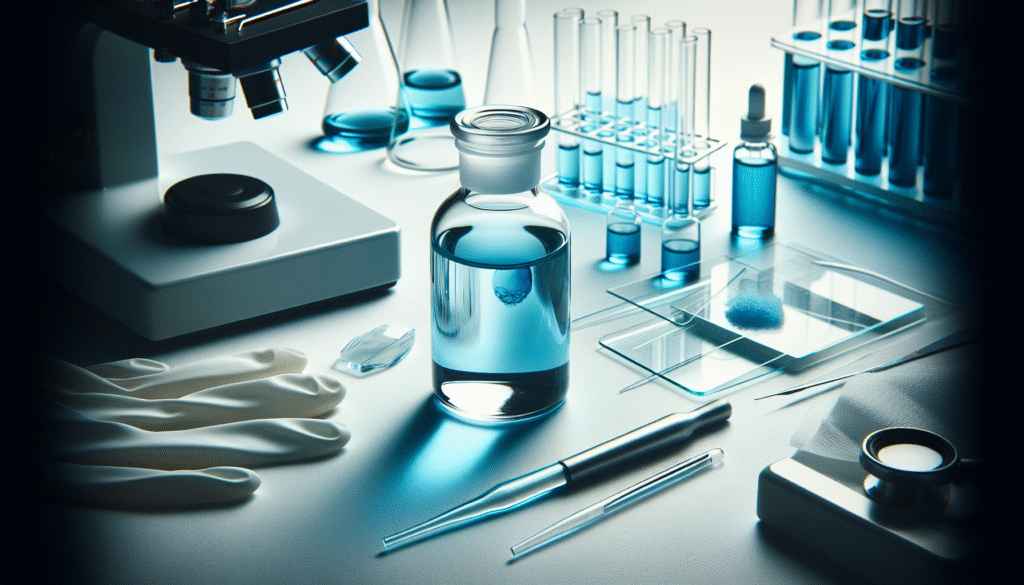
Have you ever encountered a situation in your laboratory where you needed to differentiate cellular components for a clearer understanding of biological processes? If so, the use of staining techniques such as Methylene Blue can be an invaluable tool in your repertoire. This article outlines how to create effective Methylene Blue staining protocols, providing comprehensive insights to enhance your practical skills.
Understanding Methylene Blue
Methylene Blue is a synthetic dye that offers exceptional capability in cellular staining, primarily used to visualize cellular structures under a microscope. It possesses strong affinity for nucleic acids and is particularly effective in distinguishing live from dead cells.
Chemical Properties
The chemical formula of Methylene Blue is C16H18ClN3S, and it appears as a dark blue powder. When dissolved in water, it generates a vivid blue solution, lending itself well to different staining applications. Understanding its properties is essential as it informs how the dye interacts with various cellular components, influencing the effectiveness of your staining protocol.
Applications
Methylene Blue is most commonly utilized in the fields of microbiology, histology, and molecular biology. Applications include:
- Staining bacteria to observe morphology.
- Identifying cellular structures in tissue samples.
- Differentiating live and dead cells in viability assays.
Preparing Your Lab Environment
Before you begin your staining procedure, establishing a suitable workspace is imperative. A clean, organized area enhances both efficiency and safety.
Key Equipment and Materials
The following items are essential for effective Methylene Blue staining:
| Item | Description |
|---|---|
| Methylene Blue Solution | Prepare a 0.1% or 1% solution depending on your protocol needs. |
| Microscope | A good quality microscope, ideally with a 100x oil immersion lens. |
| Pipettes | For accurate measurement and transfer of liquids. |
| Glass Slides and Coverslips | To prepare your samples for viewing. |
| Staining Jar | To hold your slides during the staining process. |
| Distilled Water | For rinsing and diluting your samples. |
Safety Considerations
Working with any chemical, including Methylene Blue, demands adherence to safety guidelines:
- Always wear protective gear including gloves, lab coats, and safety goggles.
- Be aware of the Material Safety Data Sheet (MSDS) for Methylene Blue, detailing health hazards and first aid measures.

Creating a Methylene Blue Staining Protocol
Crafting a staining protocol requires careful attention to detail and systematic planning. Follow these foundational steps to ensure consistent and reliable results.
Step 1: Sample Preparation
Preparation of your samples is critical. Depending on whether you are working with bacterial cultures or tissue sections, your approach will vary.
For Bacterial Samples
- Culture: Grow your bacteria on appropriate agar plates or in liquid media.
- Harvest: If using plates, use a sterile loop to transfer colonies into a sterile tube containing saline or broth.
- Centrifuge: Spin down the suspension to concentrate the bacteria.
For Tissue Samples
- Fixation: Chemical fixation using formaldehyde or alcohol is essential to preserve the structure of tissue.
- Sectioning: Thin sections can be obtained using a microtome to allow for effective staining.
Step 2: Formulating the Staining Solution
Methylene Blue can be prepared in various concentrations depending on your specific application. Typical formulations include:
- 0.1% Solution: This is suitable for general purpose staining and is often the preferred choice for initial staining attempts.
- 1% Solution: This more concentrated solution can offer enhanced contrast when examining highly cellular samples.
Preparation Steps
- Dissolve: Accurately measure Methylene Blue powder and dissolve it in distilled water.
- Filter: To remove any undissolved particles, filter the solution through a 0.22-micron filter.
- Store: Use a labeled container and store the solution at 4°C for future use.
Step 3: Staining Process
Now that you prepared your samples and staining solution, it is time to bring it all together. The following outlines a generalized Methylene Blue staining procedure.
General Staining Protocol
- Apply Stain: Place a drop of Methylene Blue solution onto the prepared slide with the sample.
- Incubate: Allow the slide to incubate at room temperature for about 5 to 10 minutes. This timeframe allows for optimal penetration of the dye.
- Rinse: Gently rinse the slide with distilled water to remove excess stain.
- Mount: Place a coverslip over the stained sample for microscopic examination.
Step 4: Observation and Analysis
Once you have completed the staining and mounting process, you can examine your samples under a microscope.
Microscopy
Using a microscope, begin your observation with a lower magnification to locate the area of interest, then increase to higher magnifications for detailed analysis. Methylene Blue typically stains nucleic acids, making nuclei and other intracellular components distinctly visible.
Troubleshooting Common Staining Issues
Every staining protocol has the potential for challenges; being prepared for these can save time and resources.
Insufficient Staining
If your samples appear too faint post-staining, consider these factors:
- Concentration of Methylene Blue: You may need to increase the concentration of your staining solution.
- Incubation Time: Allow a longer incubation time for the dye to penetrate adequately.
- Sample Type: Some cellular components may require different preparation techniques to enhance staining efficacy.
Overstaining
Conversely, if your samples appear overly dark or difficult to analyze, troubleshooting is equally important.
- Dilution: Reduce the concentration of Methylene Blue in your solution.
- Rinse Thoroughly: Ensure that you rinse any excess dye off thoroughly post-staining to reveal true cellular structures.
Background Staining
If you observe unsatisfactory background staining, consider the following adjustments:
- Purity of Reagents: Ensure that the Methylene Blue and other reagents are of high quality and free from contaminants.
- Washing Steps: Introduce additional washing steps before staining to remove extraneous cellular debris.
Advanced Techniques in Methylene Blue Staining
For those seeking to enhance their staining capabilities, a few advanced techniques could yield improved results.
Combining Stains
Combining Methylene Blue with other stains can provide additional contrast and allow for the identification of multiple cellular components simultaneously. For instance, using Eosin alongside Methylene Blue aids in visualizing protein-rich structures.
Modifying pH
Altering the pH of the staining solution can influence the binding affinity of Methylene Blue. Testing with solutions of varying pH is an innovative way to enhance your visual assessments.
Confocal Microscopy
For an advanced approach to examining stained samples, considering confocal microscopy can provide higher resolution images, revealing intricate details of cellular structures.
Conclusion
Creating effective Methylene Blue staining protocols involves meticulous preparation, execution, and analysis. Each component of the process contributes significantly to the overall outcome, underlining the need for precision in your laboratory practice. As you gain expertise, consider implementing various techniques that can elevate your staining results, enabling you to visualize cellular structures with confidence.
By integrating the recommendations outlined in this article, you are well on your way to mastering Methylene Blue staining and enhancing your biological analysis capabilities. Embrace the power of this versatile dye and allow it to open new avenues in your scientific exploration.